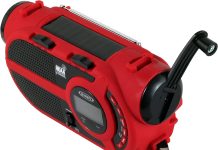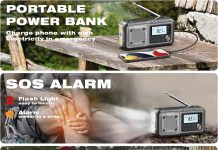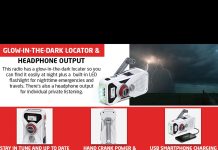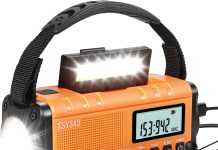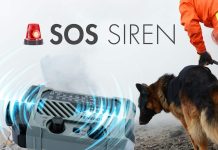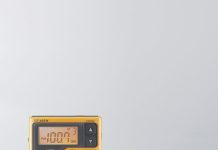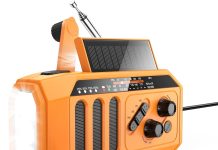
When faced with the decision of choosing an emergency radio, the options can seem overwhelming. Should we go for a hand crank, battery powered, or solar powered device? Each of these options has its own set of advantages and disadvantages. In this article, we will explore the pros and cons of each type of radio so that we can make an informed decision when it comes to ensuring our safety during emergencies.
Review contents
Hand Crank Emergency Radio
Overview
A hand crank emergency radio is a portable device that allows you to stay connected during emergency situations when power sources may be disrupted. It features a built-in hand crank mechanism that generates power to operate the radio and charge its internal battery. Simply by turning the crank, you can generate enough power to listen to the radio, stay informed about the latest news and weather updates, and even charge other small electronic devices.
Pros
One of the major advantages of a hand crank emergency radio is its self-sufficiency. As long as you have the strength and capability to turn the crank, you will always have a power source to operate the radio. This is particularly beneficial in situations where electricity or batteries may not be readily available.
Another advantage of a hand crank emergency radio is its portability. These radios are generally compact and lightweight, making them easy to carry around during emergencies or while camping, hiking, or engaging in outdoor activities. They are also designed to be durable, ensuring they can withstand rough handling and adverse weather conditions.
In addition, hand crank emergency radios often come equipped with extra features such as built-in LED flashlights, SOS alarms, and USB ports for charging other devices. These features can greatly enhance your emergency preparedness and provide additional functionality in critical situations.
Cons
While hand crank emergency radios offer a reliable power source, the amount of power generated by the crank may not always be sufficient for prolonged or heavy use. In some cases, you may need to continuously turn the crank to maintain power, which can become tiring and time-consuming.
Furthermore, the sound quality of hand crank emergency radios may not be as good as their battery or solar-powered counterparts. This is due to the limitations of the crank mechanism, which may not provide sufficient power for optimal sound reproduction.
Lastly, hand crank emergency radios may tend to be slightly more expensive compared to battery-powered or solar-powered options. However, considering their self-sufficiency and durability, the additional cost may be justifiable for those seeking a reliable emergency communication device.
Battery Powered Emergency Radio
Overview
A battery-powered emergency radio relies on batteries as its primary power source. These radios are designed to be portable and self-contained, allowing users to operate them without the need for an external power supply. They are often equipped with built-in antennas for receiving AM/FM radio signals and additional features such as weather alerts and built-in speakers.
Pros
The major advantage of a battery-powered emergency radio is its convenience. Once the batteries are installed, the radio is ready to use at any time. This makes it a reliable option for emergencies where access to electricity may not be readily available.
Battery-powered emergency radios also often offer superior sound quality compared to hand crank radios. Since they rely on batteries, they can provide a consistent power source, resulting in clear and crisp audio output.
Additionally, battery-powered emergency radios generally tend to be less expensive compared to hand crank or solar-powered options. This makes them an affordable choice for individuals or families on a tighter budget.
Cons
One of the main disadvantages of battery-powered emergency radios is the potential need for replacement batteries. Depending on the frequency and duration of use, the batteries may require frequent replacement, which can be a hassle and an additional ongoing cost.
Moreover, relying solely on batteries means that you are dependent on having a sufficient supply of them during emergencies. If you fail to stock up on batteries or they become unavailable, your ability to use the radio effectively may be hindered.
Lastly, battery-powered emergency radios may not be as sustainable or environmentally friendly as other options. The disposal of batteries can contribute to environmental pollution if not handled properly.
Solar Powered Emergency Radio
Overview
A solar-powered emergency radio utilizes solar energy to generate power and operate the radio. These radios feature solar panels that convert sunlight into electricity, which is stored in an internal battery for later use. This renewable energy source makes solar-powered emergency radios an eco-friendly choice for those seeking sustainable solutions.
Pros
The primary advantage of a solar-powered emergency radio is its self-charging capability. As long as there is sufficient sunlight available, the solar panels will continuously convert solar energy into electricity, ensuring a constant power source for the radio. This eliminates the need for batteries or manual cranking.
Additionally, solar-powered emergency radios often come equipped with a rechargeable battery that can store excess solar energy for use during nighttime or in low-light conditions. This ensures uninterrupted functionality even when sunlight is limited.
Moreover, solar-powered emergency radios tend to be highly durable and weather-resistant, making them suitable for outdoor use and withstanding harsh conditions. This durability ensures long-term reliability and reduces the need for frequent repairs or replacements.
Cons
While solar-powered emergency radios offer a sustainable power source, they are highly dependent on sunlight availability. In situations where sunlight is limited or non-existent, the solar panels may not be able to generate sufficient power to operate the radio. This can pose a challenge during prolonged periods of darkness or inclement weather.
Additionally, the initial cost of a solar-powered emergency radio may be higher compared to other options due to the inclusion of solar panels and specialized components. However, over time, the absence of ongoing battery replacement costs may offset this initial investment.
Furthermore, the sound quality of solar-powered emergency radios may vary depending on the quality of the built-in speakers. Some models may not provide the same level of audio clarity as battery-powered options.
Comparative Analysis
After examining the pros and cons of each type of emergency radio, it’s important to consider various factors for a comprehensive comparative analysis.
Sound Quality
In terms of sound quality, battery-powered emergency radios generally offer the best audio output due to their consistent power supply. Hand crank radios may suffer from limitations in sound reproduction, while solar-powered radios may vary depending on the quality of the speakers.
Portability
All three types of emergency radios are designed to be portable, but hand crank radios often have the advantage of being lightweight and compact. Solar-powered and battery-powered radios may be slightly bulkier due to their additional components.
Reliability
Hand crank radios and solar-powered radios offer self-sufficiency in terms of power generation, while battery-powered radios may require replacement batteries. However, hand crank radios may require continuous cranking, and solar-powered radios heavily rely on sunlight availability, which can affect their reliability.
Power Source Availability
Hand crank radios can generate power as long as you have the physical strength to crank them, making them suitable for situations where electricity or batteries are not available. Battery-powered radios are dependent on having a sufficient supply of batteries, while solar-powered radios rely on sunlight availability.
Ease of Use
Battery-powered emergency radios are the most user-friendly option as they do not require manual cranking or reliance on sunlight. Hand crank radios require physical effort, while solar-powered radios may require proper sunlight exposure for optimal use.
Durability
Hand crank and solar-powered emergency radios are generally designed to be durable and weather-resistant, while battery-powered radios may be more susceptible to damage if not handled with care.
Cost
Battery-powered emergency radios are often the most affordable option long-term, considering the ongoing cost of battery replacements for other models. Hand crank radios and solar-powered radios may have higher upfront costs but eliminate the need for ongoing battery purchases.
Extra Features
All three types of emergency radios may offer extra features such as built-in flashlights, SOS alarms, USB ports, and weather alerts. The availability and functionality of these features may vary depending on the specific model.
Environmental Impact
Solar-powered emergency radios have the lowest environmental impact as they utilize renewable solar energy. Hand crank radios are also more environmentally friendly compared to battery-powered options due to their self-sufficiency.
Conclusion
Choosing the right emergency radio depends on individual preferences and the specific requirements of the intended use. A hand crank emergency radio offers self-sufficiency and portability, but it may require continuous cranking and may have lower sound quality. Battery-powered emergency radios are convenient and affordable but rely on battery replacements. Solar-powered emergency radios are sustainable and reliable but are dependent on sunlight availability. Consider your priorities in terms of power source, sound quality, portability, and environmental impact to find the emergency radio that best suits your needs.

